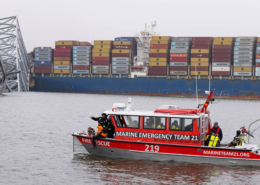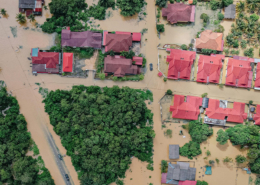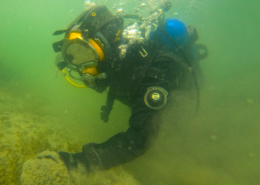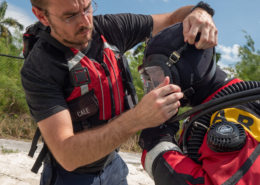PTSD and Public Safety: Part 2
Trauma and stress-related illnesses are problematic in the public safety community. It is vital to educate our public safety teams about stress-related illnesses, including mental health concerns that can impair a first responder. In order to begin such education, we must first define our terminology: stress, trauma, acute stress and post-traumatic stress disorders. We should educate first responders about symptoms, reactions, and risks, as well as treatment options and where they can find help.
Stress in a reaction…
Stress is a reaction to a stimulus that disturbs one’s physical or mental equilibrium (Course Hero, 2016). Stressful events can cause a “fight or flight” response that can lead to later anxiety or stress.
Trauma is an emotional response…
Trauma is an emotional response to a terrible event, such as a car accident, fire, natural disaster, rape, or other violent event (APA, 2010). For first responders, witnessing a fatality can be traumatic, particularly one’s first fatality. Vicarious (secondary) trauma is a process of change that occurs due to one’s concern for the hurts and troubles of others. This change process leads to changes in one’s psychological, physical, and spiritual well-being, especially resulting from repetitive exposure to trauma (Pearlman & McKay, 2008).
ASD
Acute stress disorder (ASD) is the development of symptoms lasting from 3 days to 1 month after exposure to one or more traumatic events (APA, 2010). These events include but are not limited to combat, fire, violence, death, physical attack, rape, and body recovery.
PTSD
Posttraumatic stress disorder (PTSD) is a trauma- and stressor-related disorder that may develop after exposure to terrifying events or ordeals – especially recurring events and ordeals such as fires, car accidents, or finding human remains (APA, 2010). Both ASD and PTSD are characterized by specific symptoms; ASD is short-lived, while PTSD is of longer duration.
Four signs and symptoms
In general, there are four types of signs and symptoms of stressor-related disorders: reliving the event(s), avoidance, negative changes in cognition and emotions, and hyper-arousal (APA, 2010). Each type has its own specific characteristics as well, to include flashbacks, nightmares, difficulty sleeping, and dissociation.
In addition to educating public safety workers about these concerns, we should make them aware of common reactions to trauma, including detachment, difficulty concentrating, hyper-arousal, difficulty at work or school, digestive complaints, anger, irritability, anxiety, and depression. These reactions are only a few examples; the list of common reactions is much longer (VA, 2015).
Educating our heroes about the prevalence of mental health issues in public safety is vital to their safety – both physical and psychological. When these public servants respond to a call, the community needs them to be at their best. Knowing what to look for in themselves and their fellow first responders to ensure their fitness for the task at hand will keep them safe and on the job.
References:
American Psychological Association (2010). Diagnostic and Statistical Manual of Mental Disorders Version 5
Course Hero (2016). General Psychology. Definition of Stress. https://www.coursehero.com/file/14932307/Stress/
Pearlman & McKay (2008). Understanding & addressing vicarious trauma. http://headington-institute.org/files/vtmoduletemplate2_ready_v2_85791.pdf
U.S Department of Veterans Affairs (2015). National Center for PTSD. Common reactions after trauma. https://www.ptsd.va.gov/public/problems/common-reactions-after-trauma.asp


 Photo By: Defense Visual Information Distribution Service
Photo By: Defense Visual Information Distribution Service


 Y. ZIN
Y. ZIN


Deixe uma resposta
Want to join the discussion?Feel free to contribute!